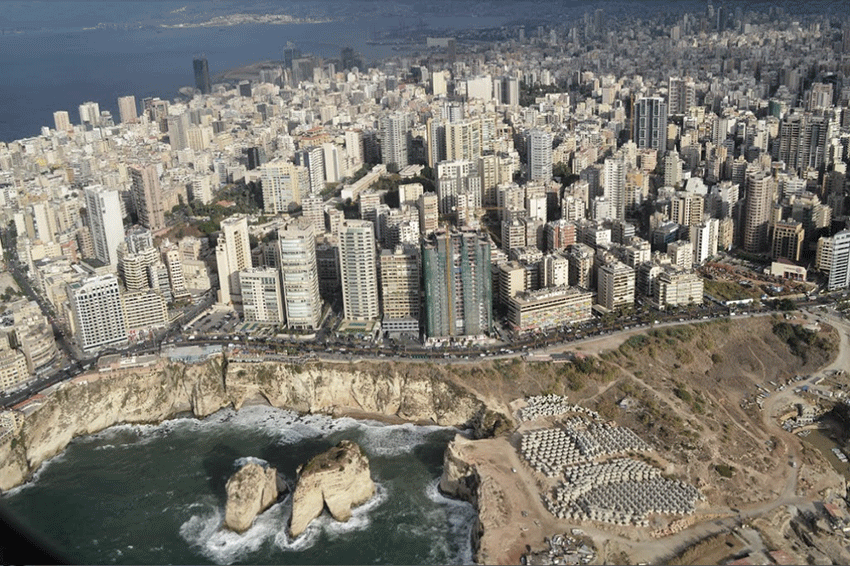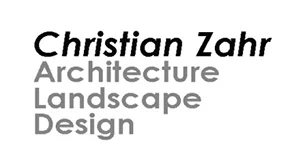






















Revisiting Dalieh Idea Competition 2015.
THE GREAT ESCAPE. Dalieh, reclaiming an urban lung on water.
Text written by Darine Choueiri (architect and urban planner) & Christian Zahr.
CONTEXT
Dalieh occupies a fringe separating Beirut from the Mediterranean Sea. This site has been shaped by natural processes but also by human activities animating its grounds until today.
Dalieh constitutes one of the remaining open and accessible seaside spots in Beirut. It has long been regarded as a communal spot, attracting different social groups, and hosting a series of activities; some of them became ritualized. Invested by fishermen, visited by strollers, animated by competitions, Dalieh is enacted by its visitors.
In a dense city like Beirut, Dalieh’s importance can only be overestimated due to the lack of free spaces, the exclusive access to privatized coastal areas or the forbidden entry to public spaces such as the Pine Forest. Boasting a natural platform on the sea, Dalieh is seen as an escape, common among the regulars and a discovery for new comers, where an underlying agreement between its visitors regulates the use of the place.
Dalieh in foucauldian terms can be interpreted as one of the city’s heterotopias, were different understandings, practices and projections intersect making this natural site an equally urban one, directly connecting to the citizens’ understanding of their urban landscape.
“There are also, probably in every culture, in every civilization, real places […] which are something like counter-sites, a kind of effectively enacted utopia in which the real sites, all the other real sites that can be found within the culture, are simultaneously represented, contested, and inverted. Places of this kind are outside of all places, even though it may be possible to indicate their location in reality. Because these places are absolutely different from all the sites that they reflect and speak about, I shall call them, by way of contrast to utopias, heterotopias.”
DALIEH AS A PUBLIC SPACE
Our proposal seeks to protect the inherent aspects of the site, which we define as tangible values; and the actual ongoing activities animating its ground, which we understand as intangible values.
Tangible values have been highlighted during the campaign for saving Dalieh and are archeological, natural, and cultural.
Whereas intangible values, in the light of the Unesco’s definition are “an important factor in maintaining cultural diversity in the face of growing globalization” which “helps with intercultural dialogue, and encourages mutual respect for other ways of life”. In the case of Dalieh, intangible values include social practices, representations, and projections of the citizens relating to the site. These values, in continuous remaking, constitute an ‘alive’ component whose preservation relies heavily on maintaining the ‘fertile’ grounds for its ongoing proliferation.
Dalieh integrates tangible and intangible values, which importance lies in the fact that it is an ‘alive’ heritage. Thus, Dalieh has naturally adopted the uncontested function of a public space; which is a space of representation, continuously shaped and reshaped by its users. For this matter, we consider that Dalieh should at the same time remain and become an inclusive open public space.
SAFEGUARDING BY DESIGN
Our proposal answers the question of how a public space is necessary to preserve the tangible and intangible values of an already highly characterized site without imposing a rigid framework hindering the ongoing existing practices. We propose ‘safeguarding by design’ as a method to preserve the actual ‘being’ of the site and encourage its ‘becoming’.
This implies a deep understanding of the key spatial and social aspects that give Dalieh its unique identity and that have been taken into consideration in its design as a public space which are:
Topography: The flatness and openness of the site towards the sea as well as its positioning regarding the city, below the corniche promenade.
Vegetation: The existing natural scenery is preserved without introducing new species that will compete with the local flora.
‘Materiality’: The ‘raw’ quality of the site, composed of natural elements, rocks and natural soil, is maintained by the use of selected materials that preserve the chromatic specter of the existing landscape.
Existing social Practices: Supporting the ongoing practices for almost 50 years by now, is fundamental to preserve the identity of Dalieh. An adequate platform is necessary to anchor actual spatial practices (fishing, small boat tours, diving, picnics, strolls, etc.)
We consider that a garden is the most adequate public function that this seascape can fulfill. By avoiding the introduction of a ‘new’ alienating activity, we seek to best preserve the practices and scenery that give Dalieh its raison d’être.
DESIGN STRATEGY
This project tests the possibilities of design to provide the necessary structure to safeguard social relations, established practices and natural assets.
Thus, the design strategy is based on:
• Increasing and securing accessibility.
• Providing the necessary infrastructures for livability and an adequate set up for the development and support of existing activities.
• Highlighting the existing spatial identity of the microspaces that constitute the cognitive map of the site.
We propose to materialize this spatial platform, integrating such diversified aspects, by means of key spatial interventions:
Cut the site from the city. The site is an escape form a dense city scape towards an open sea scape. This effect is accentuated by maintaining the difference of level with the corniche while intensifying it with a separating green screen. The projects’ horizontal lines emphasize the ‘escape’ perception by contrasting with the high rise vertical cityscape behind.
Elevated platforms as barriers. Accesses to the public garden are designed to differentiate between spatial occupations of the site. Guiding pathways lead to open grounds, while preserving the existing vegetation and maintaining the calmness in other areas.
Projecting towards the sea. A walkway with a 5 % slope allows for the access from the city’s corniche to the designed balcony opening towards Raoucheh’s Rock and reaches until the limit rocky area.
Dividing the site. The natural obstacle of the small existing hill and the designed peer differentiate between two spaces: on the one side big gatherings are favored, will on the other the natural aspect is preserved.
Filtering to recreate the wilderness of the lower part of the site. A series of narrowing pathways parallel to the sea guide a shrinking crowd and recreate the wilderness of the lower part of the site. Cutting through these pathways, another one leads to the bathing area.
A sea square. Overlooking the surrounding, a square acts as a Mediterranean balcony divided in two parts: A flat platform for big gatherings and celebrations (Nouruz), and a 6% embankment opening on the sea. The square, occupying the location of actually existing concrete blocks, is minimally designed to favor a multiplicity of uses.
Tracing the visitors’ steps. The pathways on the site follow the lines of already existing passages while new ones adapt to the existing vegetation and topography.
Two Amphitheaters overlooking the sea. One amphitheater next to the sea square has the Raouche Rock as a backstage, while the other embraces the sea for diving competitions and other performances.
Stairway to the sea. A designed stair leads down to the lower part of the cliff connecting the visitor with the raw texture of the rocks and the growing spatial vacuum allowing for another vista of the natural cliff until now only possible from the sea.
SOCIAL PRACTICES AS SPATIAL INFRASTRUCTURES & MAINTENANCE AS A GOVERNANCE TOOL
This project is based, on the one hand, on the notion of “people as infrastructure” in which social practices are understood as the framework conditioning spatial interpretations and interventions. Therefore the concept of safeguarding by design relies fundamentally on the spatial interpretation of the cognitive map of Dalieh.
On the other hand, these social practices build a network of relations among citizens. Our approach uses this network to come up with a mechanism for managing the site based on the concept of ‘maintenance’. We consider maintenance as a possible governance tool where responsibility is shared by citizens (Fishermen of Dalieh association, Association deriving from Dalieh’s campaign etc.) and institutions, in the words of Michael Hardt: “[…] we have two concepts of maintenance. One is a preservation of the same and the other notion, which seems to me is at least one way of my understanding adaptation, is a creation of a durable, lasting relation”. Imagining shared governance as a way of preserving actual practices and integrating them into an institutional structure is essential for the durability and inclusiveness of Dalieh.
Urgency: Legal and Financial Framework
Dalieh is in danger; the sense of urgency prevails over a long legal process. The Decree that the Minister of Environment is striving to issue allows Dalieh to be exceptionally saved. On the other hand, the municipality is encouraged to take in charge this public space and provide for the financial support of the public garden project proposed which respects the limits of the zone 10.III and the10.IV surface exploitation.
